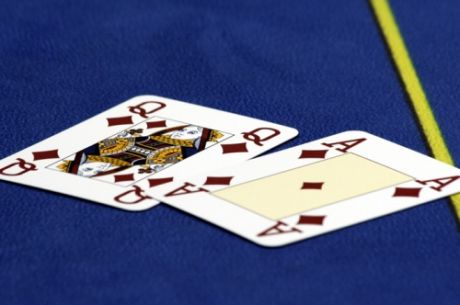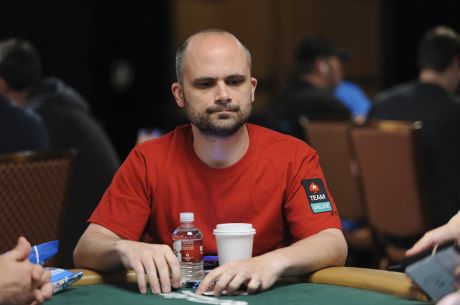Kick It Up a Notch; Add a Bit of Aggression to Your Game

In the mid-2000s, I was thinking about a replacement for my 1992 car. My leading candidate was the Honda Element. That changed when Honda came out with a model called the Fit, which is what I eventually ended up getting.
But I was paying a lot of attention when Honda produced a delightful series of commercials for the Element, in which the car has conversations with its animal friends. The ads were cute and quirky, with memorable punch lines. I loved them.
My favorite one featured a new version of the car, with a lowered suspension. His urban rat friend, Chuck, looks him over and asks, ��You get dropped?�� The Element answers, ��Little bit. Just a little bit.�� Something about the odd way that the voiceover actor dubbed that line made it stick deep in my brain. (You can watch the spot here.)
I bring this up because I��ve been thinking about how improvement in poker rarely involves a complete overhaul of how one approaches the game. The key is finding incremental adjustments. Each one doesn��t contribute much to long-term profits. But if you plug a leak here, or find a way to squeeze a little more profit there, cumulatively these improvements can have a huge impact on your win rate.
Let me tell you about an experiment I did along these lines. In 2011, I had won a free entry to the World Series of Poker Main Event �� my first (and, so far, only) $10,000 tournament. In order to prepare for it, I entered some smaller tournaments around Las Vegas, where I was living at the time. Because my poker was far more oriented to cash games, I needed some modification for tournament play.
I knew that one of the things I needed to do was bump up my level of aggression. With cash games, I had settled into a mostly tight, unimaginative pattern of playing, which was solid enough to beat most tourists without much risk. I would wait for big hands, and trap players with second-best ones. That would not be enough for a tournament, even with the Main Event��s famously slow structure.
So I entered my practice tournaments intending to find one spot in every level in which I would raise where my habitual, default strategy would have been to just call. That is, I would step up my aggression, ��Little bit. Just a little bit.��
For example, in one tournament the blinds were 100/200 with a 25 ante, and I was in the big blind with the rather awful 7x3x-offsuit. Six people ahead of me limped in. My knee-jerk reaction was to leave well enough alone, be glad to see a free flop, and hope for a miracle. But this time, in accordance with my goal, I picked this spot to raise. I bumped it up to 1000, and was rewarded with a cascade of folds and a low-risk profit of 1,650 chips. Sweet!
Thus encouraged, I took another shot when I had A?J? in the big blind. There was a standard 3x opening raise from early position followed by a call from the button. I was a big stack at this point. Both opponents were left with about 10 big blinds behind. My usual move in this spot would be to just call, first because I don't want to play a huge pot from out of position, and second because either of them could easily have a hand that had me at a great disadvantage such as AxKx, AxQx, or KxKx.
But I screwed up my courage, recognized this as a potentially good spot for a squeeze play, and moved all in. The first guy took forever to fold, and looked like he was selling his only child into slavery as he did so. The second guy was quicker, but did the same thing. As I was pulling in the chips, they said that they had folded AxJx-suited and Ax10x, respectively. They also both agreed that my bet looked like I must have AxKx. Ha!
In other situations, I check-raised where my baseline play would have been either to check-fold or check-call, or I put in a light three-bet before the flop, which was a move nearly absent from my usual cash-game play. And it kept working, winning me pots without a further fight.
The obvious take-home lesson, valid for both cash games and tournaments, was that my usual style of play would earn me a solid tight-aggressive table image, but then I was not sufficiently exploiting that image to steal pots to which the strength of my cards did not entitle me. More importantly, I could get better results without needing to change very much.
Let me recommend that same experiment to you. The next time you��re in a tournament, look for one spot per level in which you muster the courage to raise where you would ordinarily fold or just call, or bet where you would ordinarily check. You can do the same in a cash game; just alter the timing. For example, maybe every third orbit, you find such an opportunity.
The deviation from your default play will be small enough that even your best friends in a regular home game will not be able to notice that your game has evolved. And the amount extra that you win probably will not be enough to show up against normal poker variance. But it will be there in your bankroll.
Once you get comfortable with that, you can kick it up another small notch. Find two such spots per tournament level or one every other orbit in a cash game. If you go too far down this road, you��ll know it by the resistance you get, and you can dial it back a tad.
The key, though, is to keep looking for ways to improve your game, not all at once, but a little bit �� just a little bit �� at a time.
Robert Woolley lives in Asheville, NC. He spent several years in Las Vegas and chronicled his life in poker on the ��Poker Grump�� blog.
Get all the latest PokerNews updates on your social media outlets. Follow us on Twitter and find us on both Facebook and Google+!








